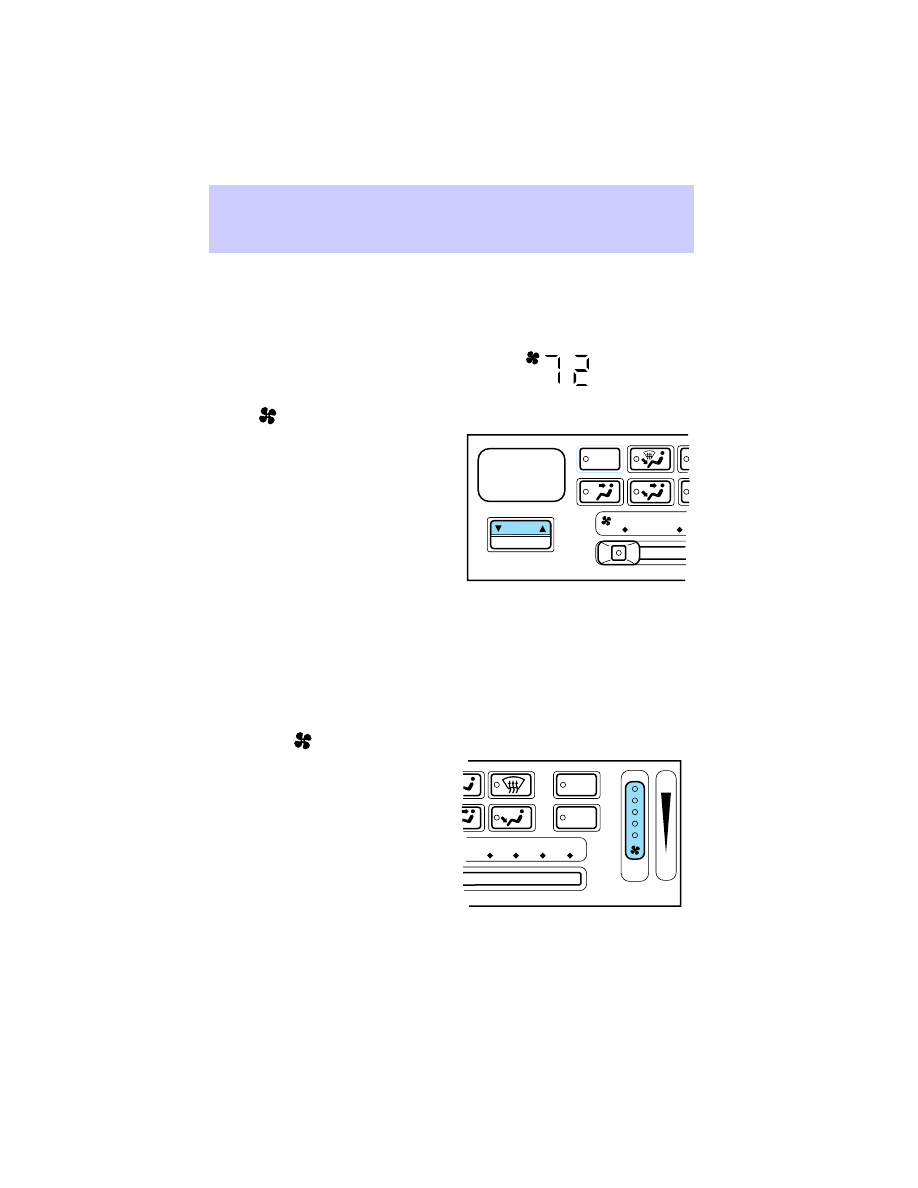Mercury Villager (2002 year). Manual - part 5

If unusual conditions exist (i.e.-window fogging, etc.), the manual
override controls allow you to select airflow locations and the fan control
allows you to adjust fan speed as necessary.
Temperature selection
The display window indicates the
selected temperature, function
(AUTO or one of the override
controls) and manual control of fan
speed (
) if automatic fan speed is not desired.
To control the temperature, select
any temperature between 15°C
(60°F) and 32°C (90°F) by pressing
the temperature controls. However,
individual temperature settings
between 15°C (60°F) and 18°C
(65°F) cannot be selected. The 15°C
(60°F) and 18°C (65°F)
temperatures are the lowest settings
available.
For continuous maximum cooling, push the temperature control until
15°C (60°F) is shown in the display window. The EATC will continue
maximum cooling (disregarding the displayed temperature) until a
warmer temperature is selected by pressing the temperature controls.
For continuous maximum heating, push the temperature controls until
32°C (90°F) is shown in the display window. The EATC will continue
maximum heating (disregarding the displayed temperature) until a
cooler temperature is selected by pressing the temperature control.
Fan speed (
)
When AUTOMATIC is pressed, fan
speed is adjusted automatically for
existing conditions. You can override
fan speed at any time. To control
fan speed manually, use the
thumbwheel to cancel automatic fan
speed operation. Rotate the
thumbwheel or press the steering
wheel controls (if equipped) up for
higher fan speed or down for lower
fan speed.
˚
F
AUTO
TEMP
AUTOMATIC
OFF REAR 1
OFF
A/C
1 2 3 4
A/C
MAX
HI
LO
Climate Controls
65